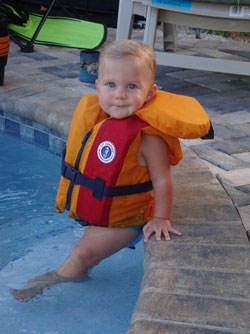Each year, hospital emergency rooms get ready – because as the temperatures rise, so do accidents caused by accidents and sports. “We see it all this time of year,” said John Giroir Jr., M.D., Rapides Regional Medical Center Emergency Department co-director. “Kids are going to be kids. And sometimes, they’re going to get hurt. But many of the accidents we treat could have been prevented.” Last year, Rapides Regional Medical Center’s emergency department and staff treated approximately 50,000 patients – and 14,175 of those were infants, children and teenagers.
Some of the most common summer dangers include:
All-Terrain Vehicles – While children can get hurt doing almost anything from jumping rope to riding a bike, it’s the ATV injuries that are most likely to be serious and life-threatening. If you choose to let your child ride on an ATV, make sure they take a safety class, make sure they wear a helmet and insist on the “No Passengers” rule.
Trampolines – If you decide to let your child jump, install protective netting around the trampoline to prevent the most serious accidents.
Bikes, inline skates and skateboards – Each year, more than 580,000 bicyclists and 100,000 inline skaters and skateboarders are injured. The majority of these accidents could be prevented by the proper use of safety gear such as helmets, wrist guards, knee pads, elbow pads and shin guards. “Helmet use provides a 42 percent reduction in death and a 62 percent reduction in head injuries,” said Donna Lemoine, RN, BSN, EMT-Paramedic, Trauma Services coordinator. “Helmets should buckle below the earlobes, sit level on the head, show no more than ‘two fingers’ of forehead and have a chin strap that fits tightly.”

Car accidents – When road trips are on the agenda, seat belts are more important than ever. Never let your child out of their car/booster seat while driving – and insist that everyone wear a seat belt!
Heat and dehydration – Keep children well hydrated, especially when they are playing outside. Children should drink every 20 minutes while playing outside – whether they are thirsty or not. For children under 5, the rule is to drink half a glass of liquid every 20 minutes. Older children should drink a full glass every 20 minutes. “Soda and other beverages with caffeine and sugar do not replenish a dehydrated body,” Lemoine said. “Water or a sports drink, like Gatorade, are the best options.”
If you have an emergency this summer, especially a pediatric emergency, remember that the staff at Rapides Regional Medical Center is available to meet your healthcare needs. “We offer Pediatric Emergency Services 24 hours a day, seven days a week,” Giroir said. “Our Pediatric team members all have training in advanced pediatric care and we have immediate access to the area’s only pediatric intensive care unit and pediatric intensivist. Not every hospital can say that.”
“It’s our pleasure to serve this community,” said Philip Lindsay, M.D., Trauma Surgery and Critical Care director. “This is what we do.”









